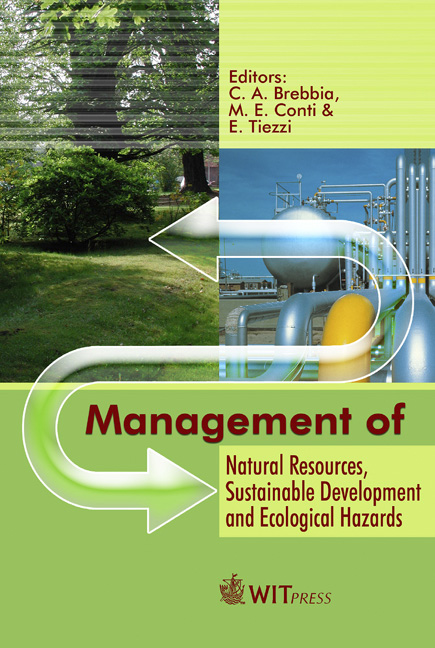Dual System For Management Of Natural And Anthropogenic Emergencies And Its Training
Price
Free (open access)
Transaction
Volume
99
Pages
10
Published
2006
Size
562 kb
Paper DOI
10.2495/RAV060421
Copyright
WIT Press
Author(s)
G. A. Sevilla, A. D. Acquesta & G. M. Giráldez
Abstract
Natural or anthropogenic emergencies change the way in which a community works, generating crisis situations and preventing the community from recovering from the impact by itself. These emergencies may destroy power, communication and drinkable water supply networks, routes of access, engineering works, crops, factories, homes and human lives. Frequently institutions are forced to respond to those situations with information that is not complete, up-to-date or reliable. Dissimilar organizations must work jointly and use the material and human assets available in an effective way. Decisions that have a direct effect on the lives of hundreds or even thousands of people are made within short periods of time and with a high degree of uncertainty. This work aims at approaching the problem in an integral way, presenting the design of an informatics system that enables crisis management as well as training for the members of the organizations involved in the response to a natural or anthropogenic emergency. We propose an Internet-supported multi-user system with tools that enable the registering, follow-up and monitoring for support requirements, access to an integrated database of available material and human assets, communication and coordination resources among participants, phenomenon mathematic model support for analysis and prognosis, and an external simulation engine to build and carry out emergency management exercises. Keywords: crisis management, training system, emergency management, natural phenomena, simulation model, risk analysis, risk assessment, risk management, information and communication issues, population protection, control management and protection.
Keywords
crisis management, training system, emergency management, natural phenomena, simulation model, risk analysis, risk assessment, risk management, information and communication issues, population protection, control management and protection.





